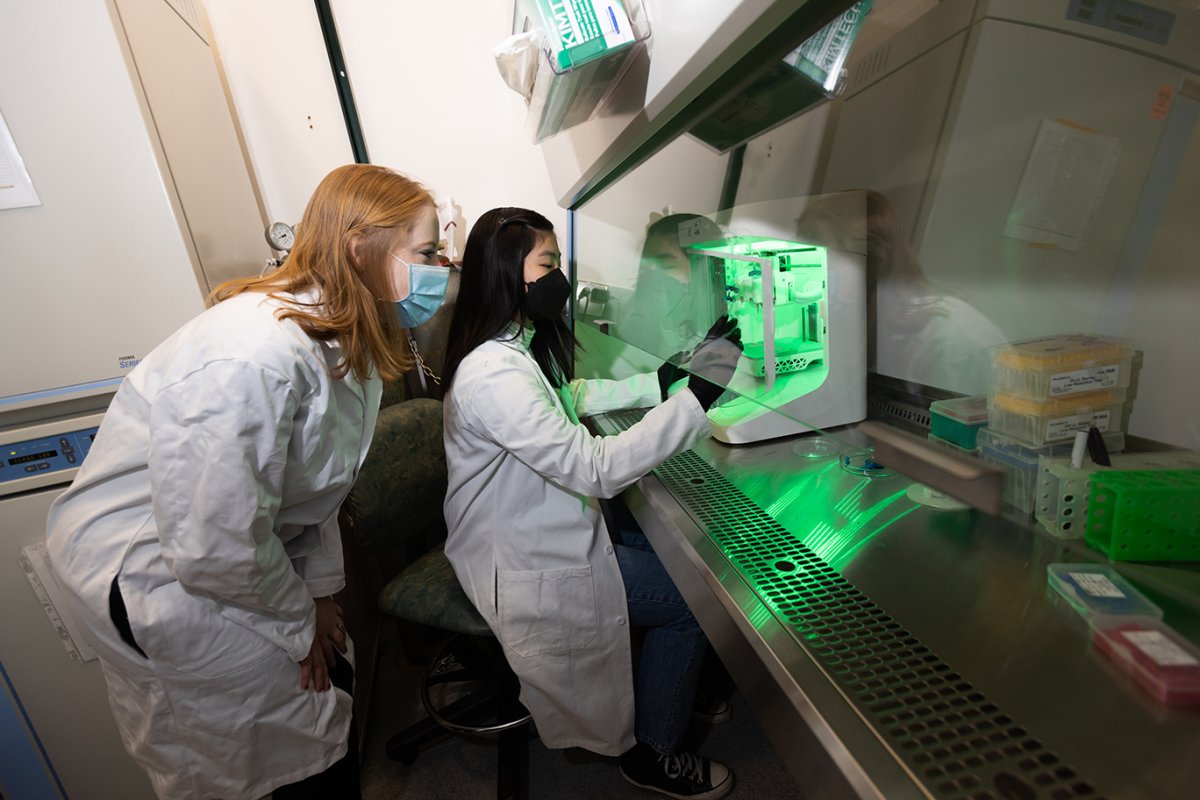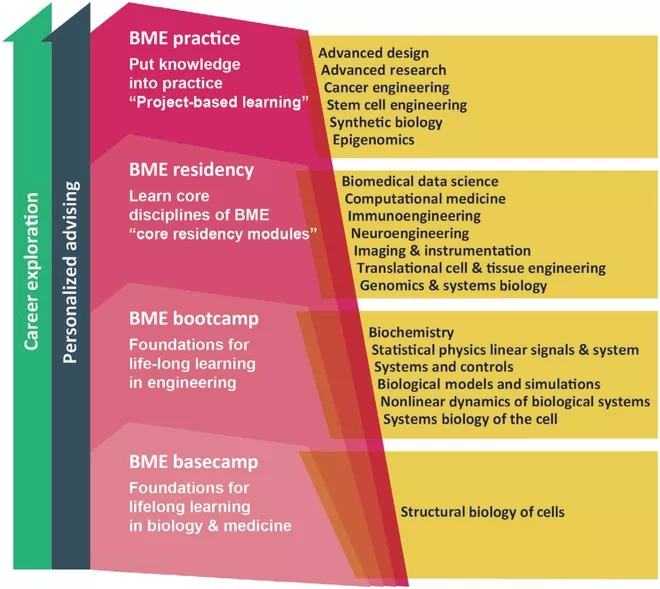Shaping the future of biomedical engineering education

February 1, 2023 — Two Department of Biomedical Engineering faculty teamed up with collaborators across the country to create a framework for what they believe will be the next wave of biomedical engineering education.
Their framework was published in BME Frontiers in an article called, “BME 2.0: Engineering the Future of Medicine.” BME Professor and Head Brenda Ogle and Associate Professor Chun Wang co-authored the article with collaborators from Johns Hopkins University, Rice University, Purdue, University of Virginia, and University of Connecticut.
Ushering in a new era for biomedical engineering
In the article, the authors lay out a roadmap for BME programs to consider as they navigate the curriculum changes necessary for the 21st century biomedical age.
The new era in biomedical engineering — dubbed BME 2.0 — was laid out by Michael I. Miller, director of the Johns Hopkins Department of Biomedical Engineering and coauthor of this paper, in his opening talk at the 2017 Biomedical Engineering Society (BMES) Annual Meeting:
“This century will be about engineering our internal world: mapping, controlling, and engineering genes, tissues, organ systems, and ultimately the human brain. As engineers, we take pride in our role as the creators of disruptive technologies – technologies that will change the future of not only biology, but of medicine as well.”
A framework for educating the next generation
In the BME Frontiers article, the authors present several principles upon which they believe the BME 2.0 curriculum should be constructed:
- Educate students bilingually, from day one, in the languages of modern molecular biology and the analytical modeling of complex biological systems.
- Prepare every student to be a biomedical data scientist.
- Build a unique BME community for discovery and innovation via a vertically integrated and convergent learning environment spanning the university and hospital systems.
- Champion an educational culture of inclusive excellence.
- Codify in the curriculum ongoing discoveries at the frontiers of the discipline, thus ensuring BME 2.0 as a launchpad for training the future leaders of the biotechnology marketplaces
Emphasis on experiential learning
In addition, the article emphasizes the importance of projects and other opportunities to put knowledge into practice.
The authors advocate for “a learning environment where students would not just be learning but would be practicing the discipline: sequencing genomes, engineering stem cells, designing synthetic human chromosomes, building imagers, engineering improved healthcare approaches using big data, and other real-world projects with basic science and clinical impact.”
